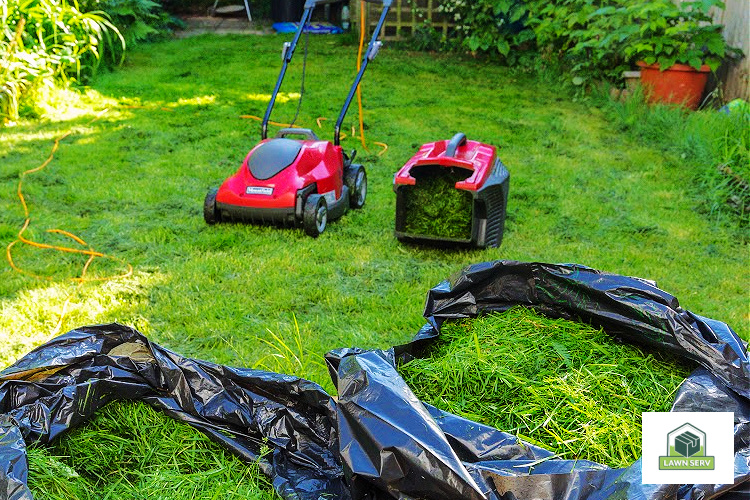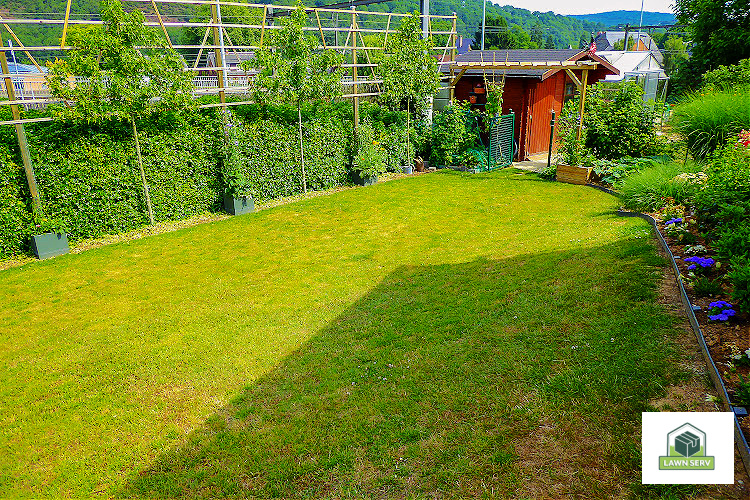
Stepping outside, you are confronted with a once-lush lawn now reduced to an arid desert of brown patches, spindly grass blades and barren spots. Your once vibrant yard now bears the unsightly marks of neglect - brown patches, spindly grass blades, and barren spots where life seems to have given up. The question nagging at your mind is how do you rejuvenate a poor lawn?
You're not alone in this battle against nature; countless homeowners share your plight. But don't despair just yet! By following simple steps and armed with some essential knowledge about soil structure, seed selection, proper watering techniques and much more – even the most distressed lawns can be brought back from the brink.
to identifying solutions that'll breathe new life into your green spaces. Guidance to assist you in whatever difficulty you may be facing, from weeding out undesirable vegetation to bettering the state of your soil - that's what we're here for.
Table Of Contents:
- Understanding Your Lawn's Current Condition
- Preparing Your Soil for Revitalization
- Choosing the Right Grass Seed for Your Lawn
- Seeding Techniques to Rejuvenate Your Lawn
- Lawn Care Techniques for a Healthy Green Lawn
- Professional Lawn Care Services by Lawnserv
- Maintaining Your Rejuvenated Lawn
- FAQs in Relation to How Do You Rejuvenate a Poor Lawn?
- Conclusion
Understanding Your Lawn's Current Condition
Reviving a poor lawn starts with understanding its current condition. You need to examine the soil structure, look for signs of compaction, and test soil pH levels.
The presence of organic matter is also vital in maintaining a healthy lawn. If you find your grass plants struggling, it could be due to low nutrient content or an unfavorable pH balance in the soil beneath them.
Diagnosing Common Lawn Problems

To recognize when your lawn needs help, pay attention to common problems like bare patches or discolored grass blades. A nice level surface and good plant coverage are essential indicators of a healthy green landscape.
A ragged edge on each grass blade can indicate dull mower blades while moss growth often suggests acidic soil conditions. By identifying these issues early on during the growing season, you're one step closer towards achieving that dreamy lush carpet-like turf.
Preparing Your Soil for Revitalization
To give your lawn an opportunity to thrive, begin by aerating the soil and removing any dead grass or thatch. Start by using a core aerator to alleviate any compaction and make it easier for grass roots to penetrate.
A lawn rake can help remove dead grass or thatch buildup which can suffocate healthy growth. The added bonus? This process also allows water, air, and nutrients easy access to the root zone of your grass plants.
The next step is giving your soil a boost with organic material. Organic matter not only improves soil structure but also feeds beneficial microorganisms that contribute towards healthier lawns. Ask UNH Extension Infoline for more helpful tips on this.
Thatch Removal for Healthier Grass Growth
Thatch removal is key in any lawn renovation plan as it aids in maintaining proper moisture levels and ensuring efficient nutrient absorption. It's one of those simple steps often overlooked yet essential in achieving that lush green look we all strive for.
Choosing the Right Grass Seed for Your Lawn

The grass seed you pick is vital to your lawn's health. Cool season grasses like Kentucky bluegrass are perfect for climates like New Hampshire. But there's also perennial ryegrass, which offers its own unique benefits.
Purchasing high-quality grass seed leads to successful lawn repair. You see, not all seeds are created equal. Some germinate faster and resist diseases better than others.
You might ask yourself: 'Why does this matter?' It matters because a stronger start means a healthier green carpet in your yard.
If you're unsure about what type of seed works best in your area, Ask UNH Extension Infoline for gardening help. They can give expert advice on choosing the right one.
Seeding Techniques to Rejuvenate Your Lawn
Not just any grass seed will do, you need high-quality ones like Kentucky bluegrass or perennial ryegrass.
Sowing these seeds isn't complicated but it does require some know-how. One method is to simply spread them around your yard using a broadcast spreader.
Fall seeding often gives better results than spring seeding because the cooler temperatures and increased rainfall provide ideal conditions for new grass roots to establish before winter sets in.
If you're unsure about doing this yourself, don't hesitate to ask UNH Extension Infoline for gardening help.
Lawn Care Techniques for a Healthy Green Lawn
Reviving your lawn isn't just about mowing. It's about feeding it right and at the correct times. By establishing a regular mowing regime, you can encourage grass growth and achieve that lush green look.
Mow regularly but avoid cutting too short as this could stress the grass plants. The trick is to let them grow longer during hot weather and shorter when cooler temperatures hit.
Nutrition also plays an important role in maintaining a healthy lawn. Feed your soil with organic matter to boost its nutrient content which helps in promoting robust root growth.
To get more help on achieving that dreamy green lawn, consider joining our Premier Lawns Community on Facebook.
Professional Lawn Care Services by Lawnserv

Reviving a lackluster lawn can be daunting. That's where professional services like Lawnserv step in to save the day.
The benefits of hiring professionals are manifold. They have expertise in identifying grass species, dealing with various soil conditions, and addressing common lawn problems effectively.
Relying on a professional service lets you avoid costly mistakes that might occur from DIY efforts. Moreover, it frees up your time so you can focus more on enjoying your rejuvenated green space rather than working on it.
Note: It's important to hire trusted experts for such tasks - after all, wouldn't you prefer someone knowledgeable handling something as vital as your lawn?
Maintaining Your Rejuvenated Lawn
Once you've achieved a verdant, revitalized lawn, it's essential to take measures to ensure its continued health and lushness. It all comes down to regular care.
Dealing with Common Lawn Issues Post-Rejuvenation
Weeds or diseases can sneak up on any healthy lawn. Regularly inspect for these nuisances so you can take action fast. A good video tutorial may be helpful here.
Tips for Keeping Your Lawn Lush and Green
To keep your grass grow steadily, it's a good idea to gradually reduce watering after the growing season ends. Moreover, feeding schedules are vital; they're like workout routines for your yard. Keep them consistent.
Bear in mind though, patience is key when maintaining a rejuvenated lawn because a truly lush and green landscape takes time to fully establish itself.
FAQs in Relation to How Do You Rejuvenate a Poor Lawn?
How do you restore an unhealthy lawn?
To revive a sickly lawn, start by diagnosing the problem. Adjust the soil pH if needed, remove thatch buildup, and reseed using high-quality grass seed suitable for your climate.
How do you revive a struggling lawn?
Breathe life back into your failing yard through proper watering, feeding with quality fertilizers, and consistent mowing. Don't forget to aerate compacted soil areas for better water absorption.
How do I completely redo my lawn?
To fully overhaul your yard: first evaluate its condition, then prepare the soil by removing old turf and improving structure. Afterward, select appropriate grass seeds to sow before regularly maintaining it once sprouted.
How do I make my grass look good again?
A healthy-looking green field needs well-aerated fertile soil rich in organic matter. Feed it with nutrients often while maintaining regular mowing schedules at the right heights, plus timely watering, especially during dry periods.
Conclusion
Revitalizing a lawn isn't just about sprinkling some seeds and hoping for the best. It's an art, it's a science, it's a journey of understanding your yard’s needs.
To answer the question 'How do you rejuvenate a poor lawn?' – You start with diagnosing common problems like soil compaction or low nutrient content. You then prepare your ground by adding organic matter and removing thatch layer to promote healthier grass growth.
Next comes selecting high-quality seed suitable for your climate, followed by mastering seeding techniques such as overseeding bare patches in the right season. Then remember this: proper care is key! Mowing regularly and feeding nutrients will lead to optimal grass growth.
If DIY seems overwhelming, professional lawn care services can lend a hand. Lastly but not leastly, post-planting maintenance ensures longevity of your green haven!
The path to greener pastures may seem long but trust us - it’s worth every step!


